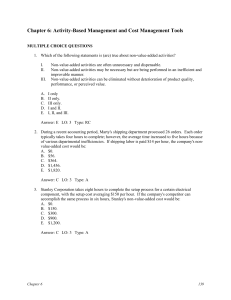TIME S A L E S Growth Stage
advertisement
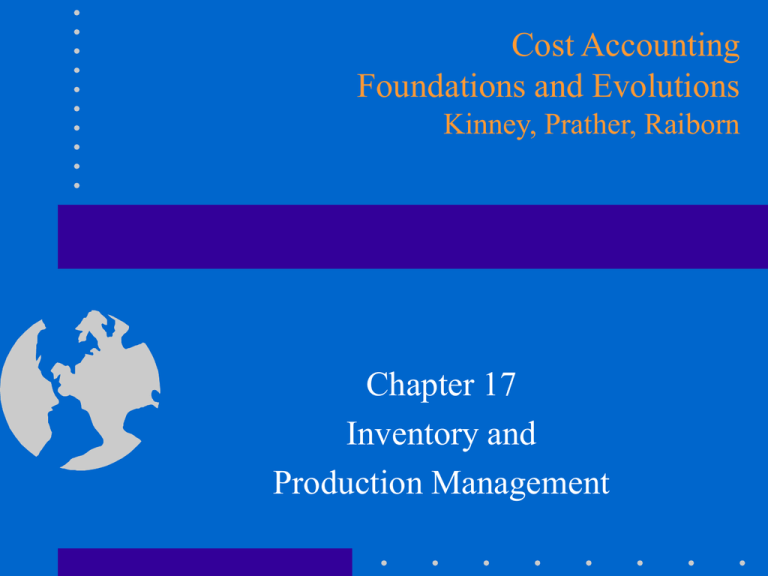
Cost Accounting Foundations and Evolutions Kinney, Prather, Raiborn Chapter 17 Inventory and Production Management Learning Objectives (1 of 3) • List the most important relationships in the value chain • Explain why inventory cost management is important • Contrast the push and pull systems of production • Explain why product life cycles affect product costing and profitability Learning Objectives (2 of 3) • Define target costing and explain how it influences production cost management • Describe the just-in-time philosophy and explain how it affects accounting systems • Describe flexible manufacturing systems Learning Objectives (3 of 3) • Explain how the theory of constraints helps in determining production flow • (Appendix) Illustrate how the economic order quantity, reorder point, and safety stock are determined and used Managing Inventory The goal is to minimize the company’s monetary commitment to inventory without negatively impacting product availability Inventory • • • • • Types Raw material Work in process Finished goods Indirect materials (supplies) Merchandise inventory Costs • Purchasing/production • Ordering/setup • Carrying/not carrying Production Systems • Push Systems – Produce in anticipation of customer orders – Store raw material, work in process, and finished goods inventory • Pull – Produce as needed – Minimal storage Product Life Cycles S A L E S TIME Development Stage • Decisions made during the development stage represent 80 to 90 percent of product’s total life-cycle costs • Development (R&D) costs expensed as incurred in financial accounting Introduction Stage • Substantial costs including engineering changes, market research, advertising, and promotion • Sales low Introduction Stage • Sales price matches similar or substitute goods S A L E S TIME Growth Stage • Increased sales • Quality may improve • Prices stable Growth Stage S A L E S TIME Maturity Stage • Sales stabilize or decline slowly • Firms compete on selling price • Costs at lowest level S A L E S TIME Maturity Stage Decline Stage • Waning sales • Dramatic price cuts • Cost per unit increases as fixed costs are spread over fewer units S A L E S TIME Decline Stage Just-in-Time • Eliminate any process or operation that does not add value • Continuous improvement in production/performance efficiency • Reduction in total cost of production/performance while increasing quality Traditional Manufacturing • Smooth operating activity – steady use of workforce – continuous machine utilization • Spread overhead over a maximum number of products • Inventory levels high enough to cover up inefficiencies in acquisition and/or production JIT Plants • Minimize material handling time, lead time, movement of goods • Use manufacturing cells which allow for visual controls, greater teamwork, quick exchange of vital information • Reduce storage • Increase throughput • Develop multiskilled workers • Use autonomation – programmed factory equipment Manufacturing Methods • • • • Flexible Manufacturing System (FMS) network of robots and material conveyance devices monitored and controlled by computers modular factories customization quick, inexpensive production changes Computer-Integrated Manufacturing (CIM) • two or more FMSs connected via host computer and information system Theory of Constraints (TOC) Flow of goods through a production process cannot be at a faster rate than the slowest bottleneck in the process Eliyahu Goldratt Theory of Constraints • Constraint - anything that confines or limits a person or machine’s ability to perform a project or function – Human constraints – Material constraints – Machine constraints • place quality control points before bottlenecks Questions • What is the difference between push and pull systems of production? • What is target costing? • What is the just-in-time philosophy? How does JIT affect production?




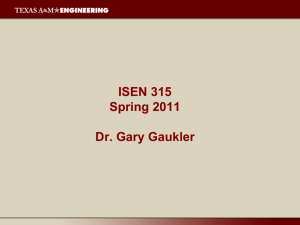
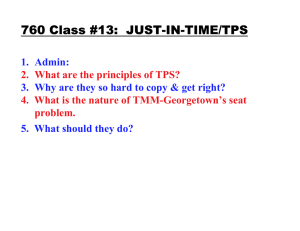

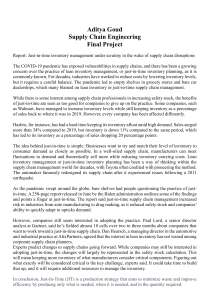
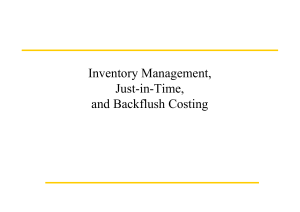
![Just In TimebySteveSpangler[1]](http://s2.studylib.net/store/data/015258223_1-6dc0b9ee782adffcd2f1156437c2a291-300x300.png)

